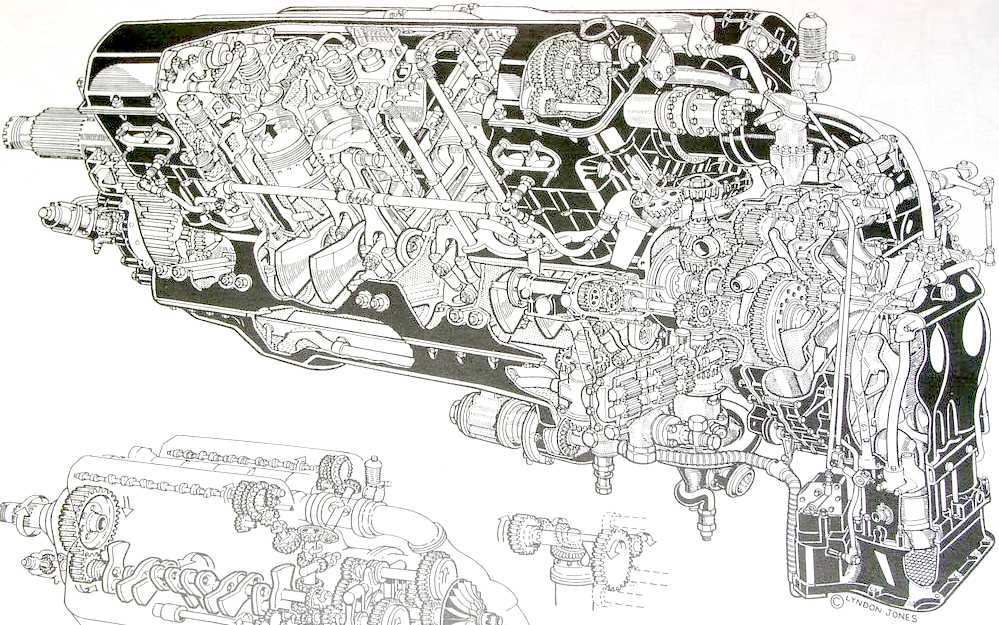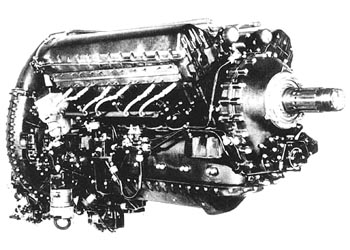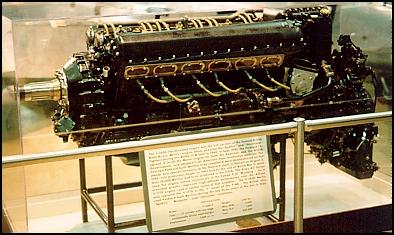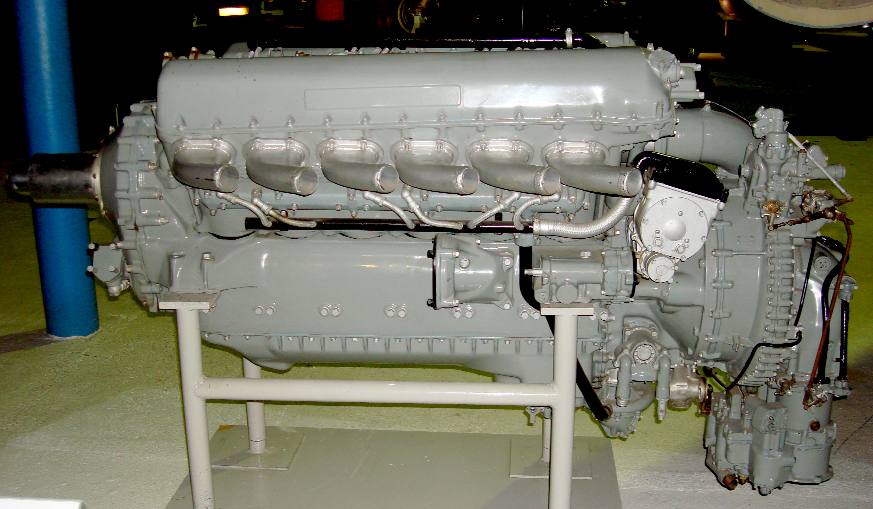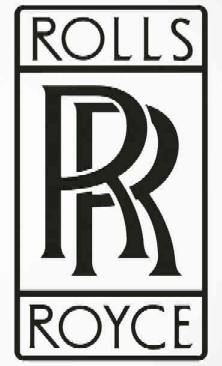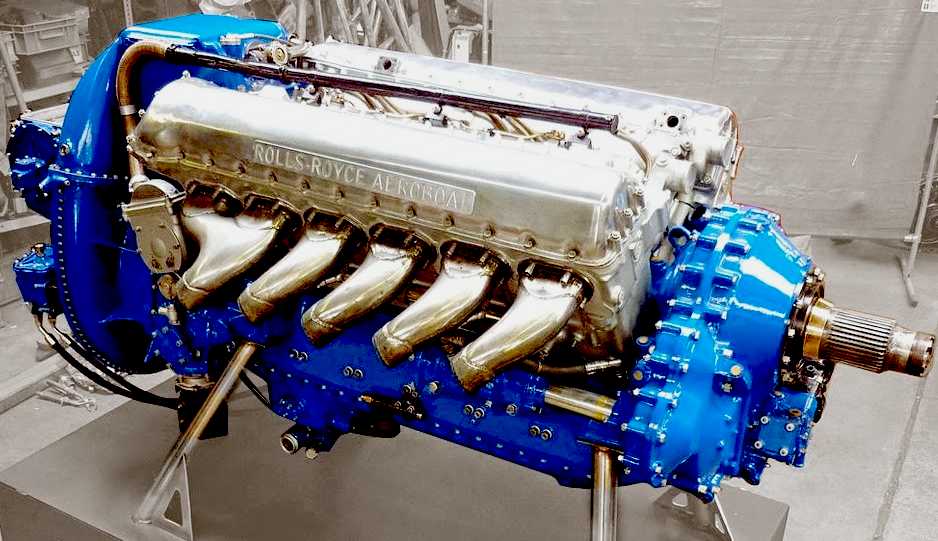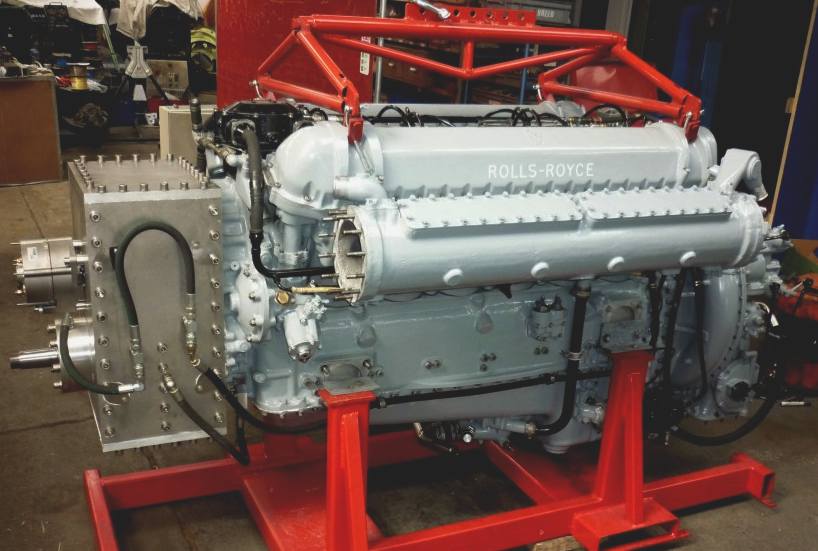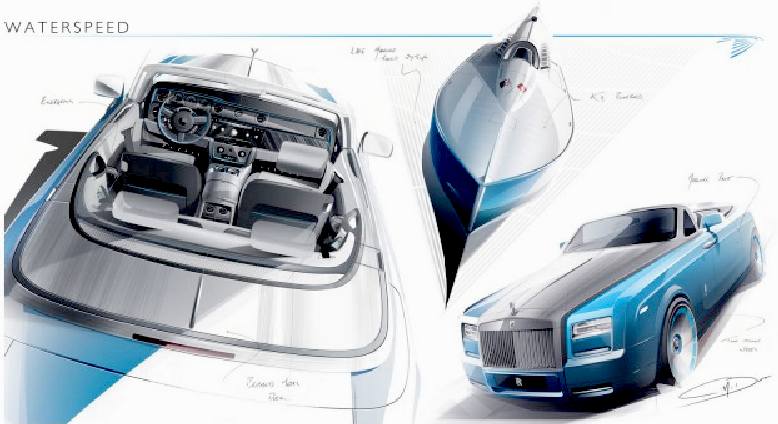|
ROLLS ROYCE MERLIN ENGINE
|
|
|
Rolls-Royce Rolls-Royce is a set of several companies, all deriving from the automobile and aero-engine company founded by Henry Royce and Charles.S. Rolls in 1906. Rolls Royce plc, by far the most significant in economic terms, is a British engineering firm these days specializing in turbine-based products, particularly aero engines, but providing a wide range of civil and military engineering products and services. Official site: http://www.rolls-royce.com/
In 1928 Vickers Aviation took over Supermarine. In 1938 Supermarine and Vickers were taken over by Vickers-Armstrong. The first Supermarine landplane to go into production was the famous Spitfire, which proved to be a successful design and, along with the Hawker Hurricane, entered into legend after its role in the Battle of Britain.
In 1936 the Air Ministry called for new fighter aircraft A fighter aircraft is a military aircraft designed primarily for attacking other aircraft. Compare with bomber. Fighters are comparatively small, fast, and highly manoeuverable, and have been fitted with increasingly sophisticated tracking and weapons systems to find and shoot down other aircraft.
Rolls Royce Merlin Engine
The Merlin engine was essential to Britain`s war effort, it not only powered the Spitfire, but also the Hurricane, Lancaster and Mosquito. The Spitfires in the Battle of Britain were fitted with the Merlin III of 1,030 horsepower.
Developed as a replacement for the Kestrel engine that had powered the RAF's graceful Fury Biplanes in the `30s, and whose development had been spurred by the American Curtiss engines, it is perhaps surprising that the Merlin was designed at all. When the Merlin was on the drawing board a simple development of the Kestrel called the Peregrine promised to be very successful, and a 24 cylinder variant called the Vulture was hoped to give 1,700 horsepower.
There was also the chance that the "R" engine that had powered the Supermarine S6 could be developed as a production engine (the Griffon). Thus the Merlin was seen as something of a stop-gap to fill the void between the Vulture and the Kestrel. It is just as well the Merlin existed, the Vulture engine had a very troubled time in development and two aircraft programmes based on it, the Avro Manchester bomber and the Hawker Tornado fighter had to be cancelled. The Peregrine overcame some early problems, but simply did not have the development potential of the Merlin, and the excellent Whirlwind fighter that was powered by a pair of Peregrines was only produced in small quantities.
The Griffon only became available in quantity during the last two years of the war. Of course there was another manufacturer of in-line engines in Britain, D. Napier and Sons, but again both of their major engine projects, the Dagger of 1,000 hp and the Sabre of 2,000 hp, had problems. Napier persevered with the Sabre, but it was only during 1942 that they became available in any numbers to power the Hawker Typhoon. Thus it was the Merlin that had to meet all Britain`s in-line aeroengine needs for the early war years.
The Merlin was at first designed to have a novel cooling system. Evaporative cooling was to be provided by condensers in the wings with a small retractable radiator for use at low speeds and when taxiing. Evaporative cooling is a system in which latent heat of evaporation is used to carry heat away from an object to cool it. The latent heat contains a considerable amount of energy, and carries away more heat than if the same temperature liquid was simply removed physically. The simplest example would be sweat, which the body secretes in order to cool itself. The amount of heat transfer depends on the evaporation rate, which in turn depends on the humidity of the air and its temperature, which is why you sweat more on hot, humid days.
Then Rolls-Royce adopted Ethylene Glycol as a coolant, which is more efficient than water, a radiator for the new coolant could be much smaller than those used with water-cooled engines, the wing condensers were then done-away with. The cooling system was vulnerable to damage by gunfire, particularly as the header tank was situated at the very front of the aircraft. A hit here by the rear gunner of a German bomber would cause a Spitfire pilot to have to break off his attack and land before the engine overheated. Even worse, pure Ethelene Glycol is flammable and added to the risk of the engine catching fire.
Ethylene glycol was first prepared in 1859 by the French chemist Charles Wurtz. It was produced on a small scale during World War I as a coolant and as an ingredient in explosives. Widespread industrial production began in 1937, when its precursor ethylene oxide became cheaply available, the engine was switched to this system instead. Ethylene glycol (IUPAC name:ethane-1,2-diol) is a chemical compound widely used as an automotive coolant and antifreeze. In its pure form, it is a odorless, colorless, syrupy liquid with a sweet taste. Ethylene glycol is toxic, and its accidental ingestion should be considered a medical emergency.
Packard V-1650 Merlin Engine
Designed by Rolls-Royce as a private-venture, the Merlin was able to take advantage of the new 100 octane fuel developed in the U.S.A. The Merlin only had one disadvantage when compared with German engines, the latter were fitted with fuel injection to deliver a precise charge of petrol to the combustion chamber. The Merlin still used a carburettor, which had the advantage of being much simpler and needing much fewer components, but it did cause the Merlin to "conk-out" if negative G forces were applied. Thus a German pilot with a Spitfire on his tail could simply pull negative G nosing into a dive and the Spitfire would fall behind until the engine picked up, only a matter of a second or two, but that second was all the German needed. Spitfire pilots developed a way around this by doing a half-roll before following into a dive. This meant that the force of gravity acted in the opposite direction and the Merlin was unaffected. In 1941 a carburettor modification, developed by Miss Tilly Shilling, enabled the Merlin to carry on working with short periods of negative G, a vital stop-gap until the introduction of true negative G carburettors in 1943.
Merlin development might have stagnated after 1940, any further increases in power needed a more efficient means of transferring the heat away from the engine. Rolls Royce responded with a mixture of water and Ethelyne Glycol which was put under pressure. This mixture also reduced the fire risk associated with using pure Ethelyne Glycol. This system was first used in the Merlin XII used in the Spitfire Mk II. The rapid introduction of this system was only made possible by everything Rolls Royce had learnt about pressurised cooling when developing the Goshawk and early Merlin condenser systems.
The RR Merlin engine in Miss Bardahl, one of the most successful racing hydroplanes in the 1960s - three times Gold Cup winner. This the view from the cockpit forward. Imagine the noise, hence the nickname 'Roar of the Dragon.'
As piston engines get higher, they lose power because the air gets thinner. What is needed is a fan to suck more air into the engine and improve combustion, just like bellows in a furnace. Such a device is called a supercharger, today more commonly a turbocharger would be used. It was the introduction of a more powerful two-stage supercharger to the Merlin that produced the leap in performance of the Mark VIII and IX Spitfires.
A supercharger is a gas compressor used to pump a fuel/air mixture, the charge, into the cylinders of an internal combustion engine. This increases the concentration of oxygen and fuel in the charge making the engine more powerful. It is similar in purpose to the closely related turbocharger, but differs in that the supercharger is powered by gearing (or belts) off the engine's crankshaft, while the turbocharger is powered by the pressure of exhaust gases driving a turbine.
The Merlin was produced under licence in America by the Packard company. These engines were used in the Spitfire XVI, but they also found use as the powerplant that enabled the P51 Mustang to be transformed from a low altitude army cooperation fighter into the long range, high altitude nemesis of the Luftwaffe.
One thing that is often forgotten is that the capacity of the Merlin was quite small when compared to the opposition. The Merlin had a capacity of 27 litres, whereas the DB601 of the Messerschmitt was 39 litres and the BMW801 engine of the Focke-Wulf 190 had 42 litres. The superiority of the later Merlin engined Spitfires (ie Mk IX) over these Luftwaffe aircraft is all the more remarkable when this is remembered.
ROLLS-ROYCE MERLIN ENGINE SPECIFICATIONS
TYPE- TWELVE CYLINDER 60 DEGREE UPRIGHT VEE LIQUID COOLED INTERNAL COMBUSTION ENGINE. BORE x STROKE= 5.4in x 6in (137.3mm x 152.5mm) CAPACITY= 1,647 cu in (27 litres) MERLIN III TAKE OFF POWER: 880 HP AT 3,000 REVS INTERNATIONAL RATING: 990 HP AT 2,600 REVS AT 12,250 FT. MAX POWER: 1,440 HP AT 3,000 REVS AT 5,500 FT. WEIGHT: 1,375 LBS. MERLIN 66 TAKE OFF POWER: 1,315 HP AT 3,000 REVS MAX POWER: OVER 1,650 HP. WEIGHT: 1,650 LBS
PACKARD V-1650 "MERLIN" ENGINEThe V-1650 liquid-cooled engine was the U.S. version of the famous British Rolls-Royce "Merlin" engine which powered the "Spitfire" and "Hurricane" fighters during the Battle of Britain in 1940. In Sept. 1940, the Packard Co. agreed to build the Merlin engine for both the American and the British Governments, and adapted it for American mass-production methods. The first two Packard-built Merlins to be completed were demonstrated on test stands at a special ceremony at the Packard plant in Detroit on August 2, 1941. Full production began in 1942 and by the end of World War II, 55,873 Merlins had been produced in the U.S.A. The Army Air Forces used the engine almost exclusively in the famed P-51 "Mustang", for it provided greatly improved high-altitude performance over the Allison V-1710 engine used in earlier series of the airplane. The V-1650 Merlin also replaced the V-1710 in the "F" series of the P-40. The British also used Packard-built Merlins during the last three years of the war in their "Spitfire", "Mosquito", and "Lancaster" airplanes.
PACKARD SPECIFICATIONS
Model: V-1650-7
The Rolls Royce Griffin engine. 3000hp @ 9000 rpm
At one time, just before the opening of World War II, there were two types of fighters. Smaller single-engine planes were used as interceptors and day fighters, with airspeeds that would eventually have to be over 300 mph (480 km/h). Two designs were eventually selected for development, the Hawker Hurricane and the Supermarine Spitfire.Both were designed around the PV-12 instead of the Kestrel, and were the only modern fighters on the drawing boards. The PV-12 was instantly catapulted to the top of the supply chain and became the Merlin. First widely delivered as the 1,030 hp (770 kW) Merlin II in 1938, production was ramped up quickly.
Early Merlins were considered to be rather unreliable, but their importance was too great for this to be left alone. Rolls soon introduced a superb quality control program to address this. The program consisted of taking random engines right off the end of assembly line and running them continuously at full power until they broke. They were then disassembled to find out which part had failed, and that part was redesigned to be stronger. After two years of this the Merlin matured into one of the most reliable aero engines in the world, and could be run at full power for entire eight hour bombing missions without complaint.
The result was that the otherwise similar engine delivered 1,300 hp (970 kW). This process continued, with later versions running on ever-increasing octane ratings, delivering ever-increasing power ratings. By the end of the war the "little" engine was delivering over 1,600 hp (1,200 kW) in common versions, and could deliver over 2,000 hp (1,500 kW) for brief periods in some versions.
LAND AND WATER SPEED RECORDS
The 'R' series engine was used by Sir Malcolm Campbell in his Blue Bird world land and water speed craft, details of which are included on other pages on this website, with links to other interesting websites.
The R series Rolls Royce Merlin engine that took the triple crown: Air, land and water speed records all in the same year
SIR MALCOLM CAMPBELL'S BLUE BIRDS
Rolls Royce Phantom "Waterspeed" commemorative edition drophead coupe. This special limited run of custom cars is dedicated to Sir Malcolm Campbell and the famous K3. The Rolls-Royce Phantom Drophead Coupé Waterspeed Collection was previewed to selected UK press and customers at an exclusive event on the site of the original Bluebird Motor Company – now the Bluebird Restaurant – on the King’s Road, London on Tuesday 13 May 2014.
Merlin (Falco columbarius) is a falcon found throughout the northern parts of the Northern hemisphere in Canada and northern Europe.
In
North America it was once known as the pigeon hawk, and its
scientific name (from columba, a dove) also refers to this
popular prey item. However, the merlin is a falcon, not a hawk, so the
old name is to be avoided.
Brown Falcon.
A
Falcon is any of several species of bird of the genus Falco, such
as the Peregrine Falcon which are raptors or 'birds of prey'. Falcons
have thin, pointed wings, which allow them to dive at extremely high
speeds. (Peregrine Falcons are said to have reached speeds of up to 200
mph.)
An aircraft is any machine capable of atmospheric flight. The origin of engineering was the working of engines. There is an overlap in English between two meanings of the word "engineer": 'those who operate engines' and 'those who design and construct new items'.
|
|
|
This
website is Copyright © 2014 Bluebird Marine Systems Limited.
The names Bluebird™,
Ecostar
DC50™, Blueplanet BE3™ and the blue bird in flight
|
